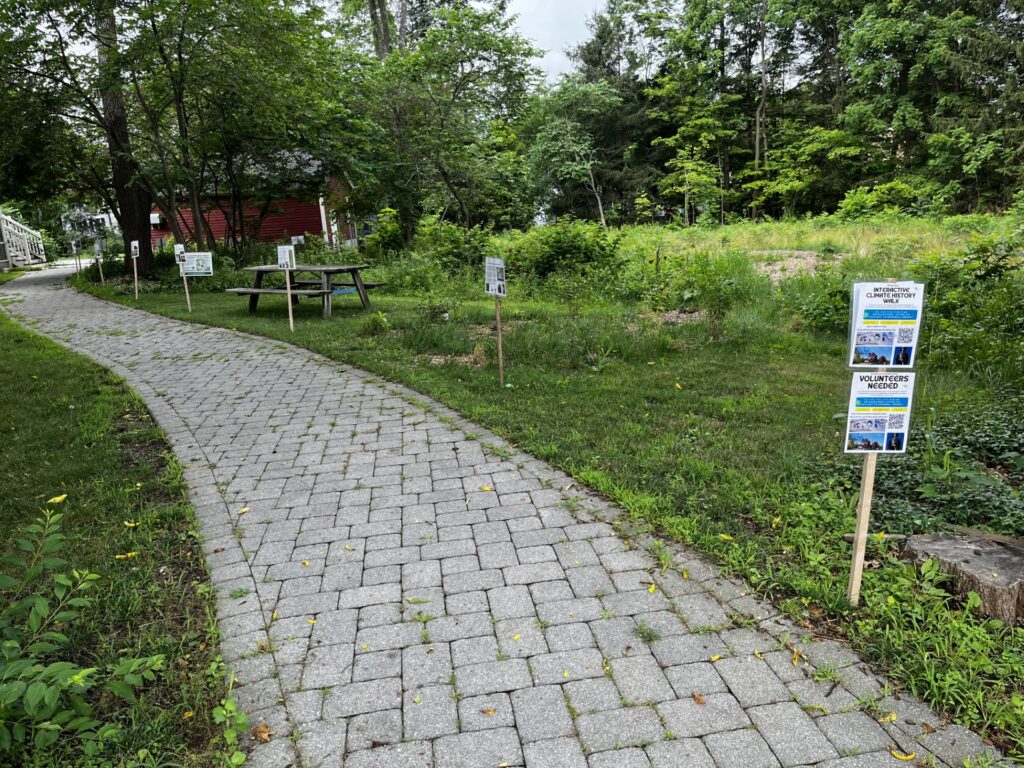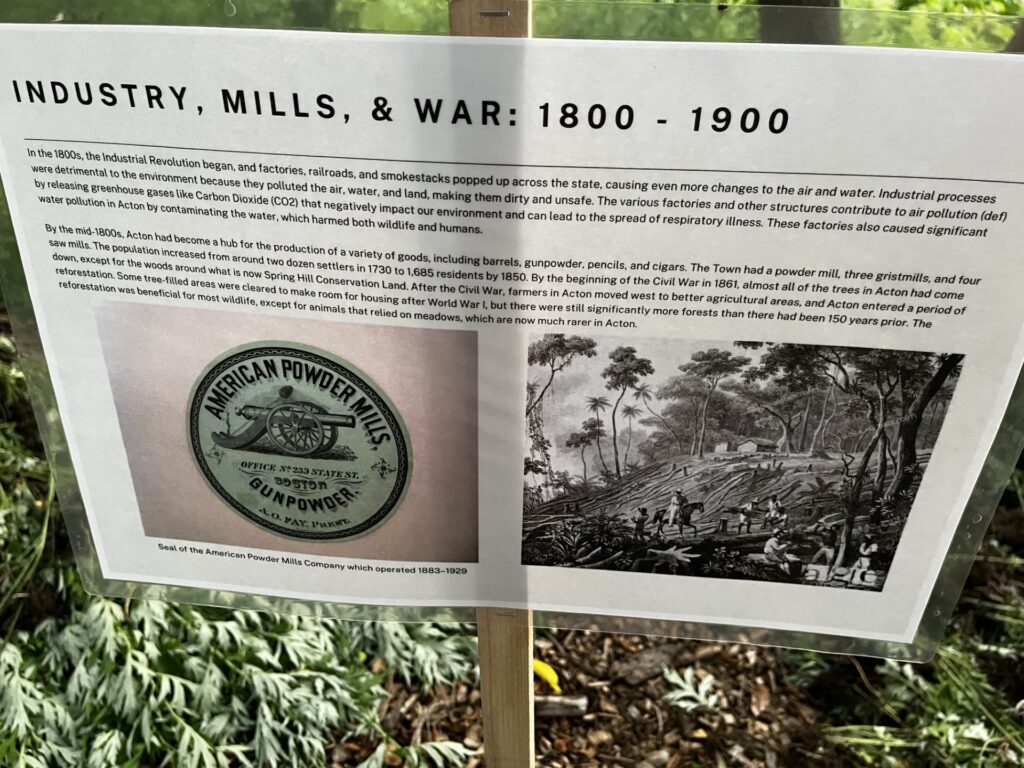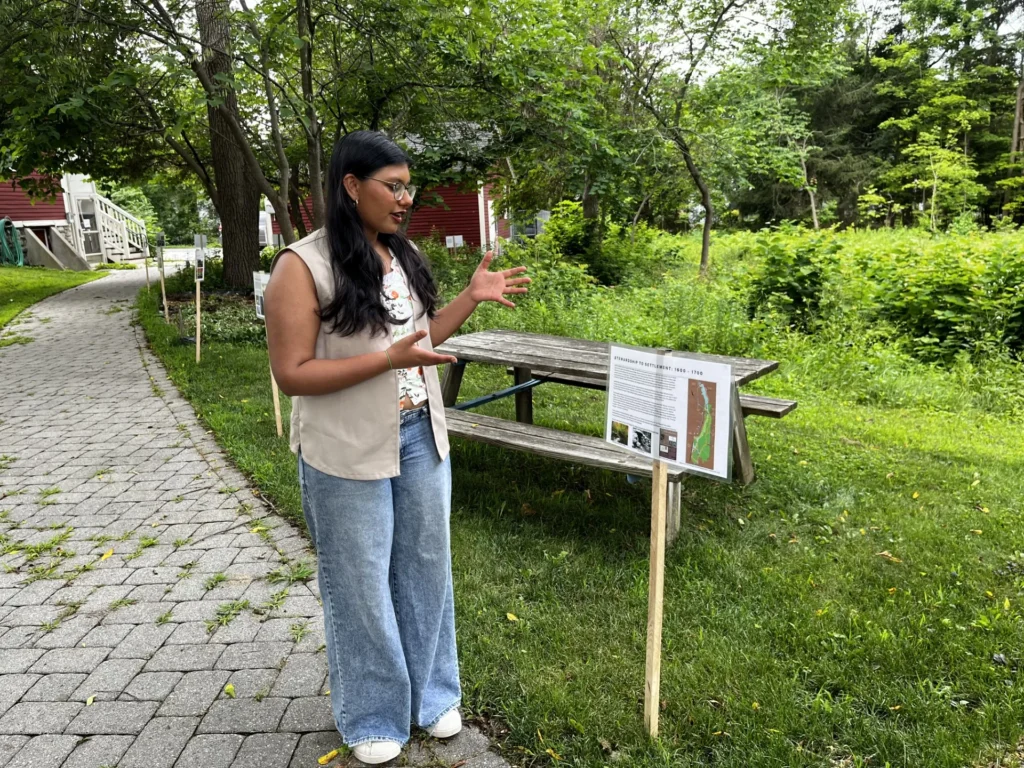As her Girl Scout Gold Award project, Suravi Bhatia has created a self-guided environment/climate history walk along the path behind the Red House, across the street from Town Hall. This reporter toured the walk with Bhatia on July 13.

The walk comprises twelve illustrated panels, organized chronologically, from “Original Stewards: 1600s and earlier”, to “Into the Future: 2030 and beyond”. Each information-packed panel has been carefully researched, and collectively they help visitors realize that climate and environmental change are not only recent phenomena. The panel for “Agricultural Awakening (1700-1800)” describes how forests were removed to make room for agriculture to support a growing population. “Industry, Mills & War (1800-1900)” describes the arrival of the Industrial Revolution and its local manifestation in “a powder mill, three gristmills, and four sawmills.”

“Postwar Growth (1940-1960)” recounts the arrival of suburban sprawl and increased reliance on fossil-fuel burning vehicles. The W.R.Grace incident, perhaps Acton’s best-known environmental crisis, has its own panel that describes the 1970s discovery that public water supply wells had been contaminated with industrial chemicals, and the subsequent groundwater clean-up under the U.S. Superfund program. The last two panels anticipate possible future developments, referencing Acton’s Climate Action Plan Blueprint, Open Space Plan, and various bills under consideration in the Massachusetts Legislature.
Bhatia is a rising senior at Acton-Boxborough Regional High School. She credits the Advanced Placement Environmental Science course, taught by Mr. Hohn, with sparking her interest in the environment. In designing and installing the Environmental History Walk, she had help from Ian Bergemann, Acton’s community conservation specialist, and from her Gold Award advisor Ms. Kohlman. In addition to her deep involvement with Girl Scouting, Bhatia has also been an Environmental Justice Chair of Governor Maura Healy’s Youth Climate Council, and serves on Acton’s Diversity, Equity and Inclusion Commission. She helped to organize the local Diwalifest and lobbied for Diwali to be a school holiday. She wants to study public policy in college, and then seek work where she can have the most impact.

The Gold Award is the highest honor of Girl Scouting. Gold Award candidates are required to plan and implement a project that will “help fix a problem in their community or make a lasting change in their world”. Gold Award projects must address the “root cause” of a problem, and Bhatia is helping Actonians understand the relationship between today’s environmental problems and actions and decisions of the past.
Adjacent to the environmental history walk, visitors can also view early stages of the Greening of the Red House project. Invasive plants are being removed, replaced with a pollinator garden, a restored meadow, wheelchair accessible picnic tables, and other features of a “welcoming, wildlife-certified, educational space.”The Sustainability Office and Conservation Department envision using this space for “outreach, education, and public engagement on climate resilience”. Between scheduled events it will be open to the public as a “pocket park.”
Bhatia’s environment/climate history walk will be in place through the end of July. The hope is that the signs can be put out yearly.
Kim Kastens is an associate editor of the Acton Exchange, and chairs the Water Committee of Green Acton. In 2007, as a research professor of Earth & Environmental Sciences at Columbia University’s Lamont-Doherty Earth Observatory, she participated in a College Board Commission to plan for the redesign of the AP Environmental Science curriculum, and she is always happy to meet students who have been positively influenced by that course.













